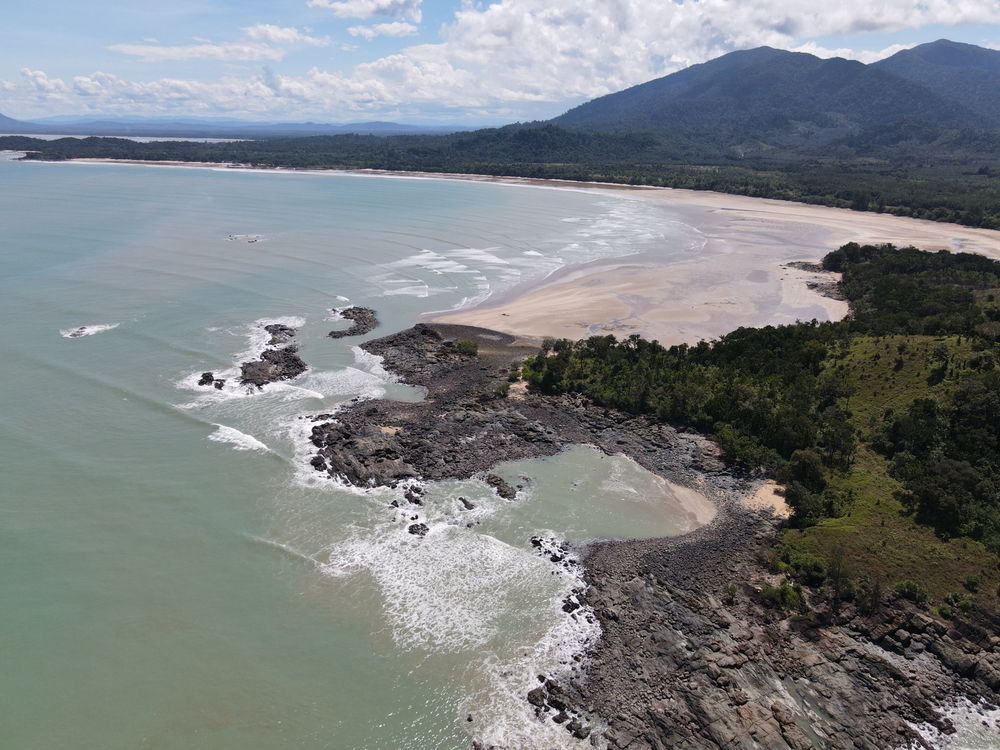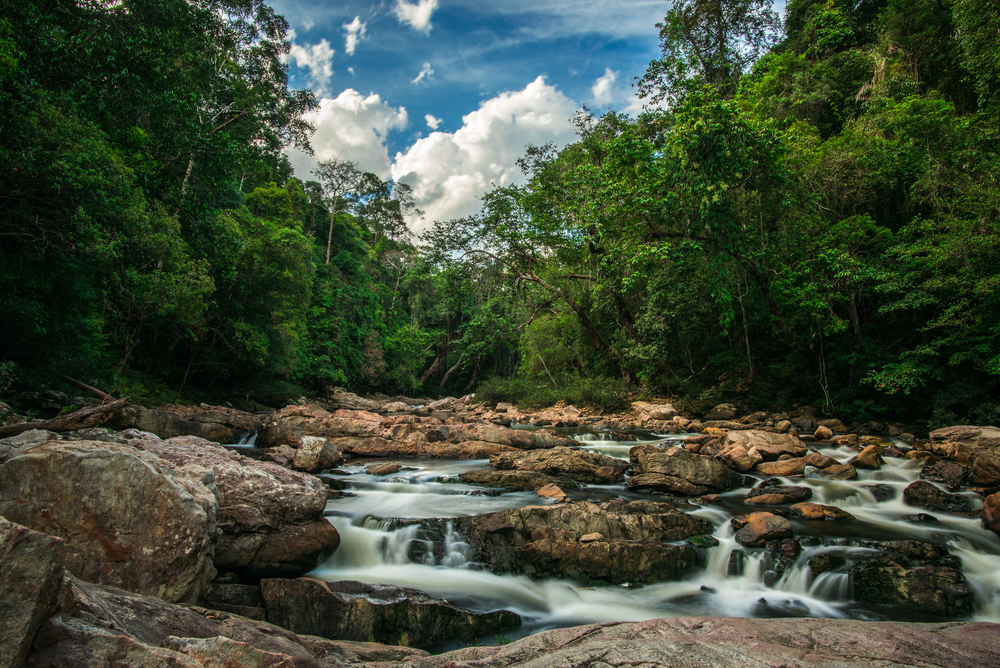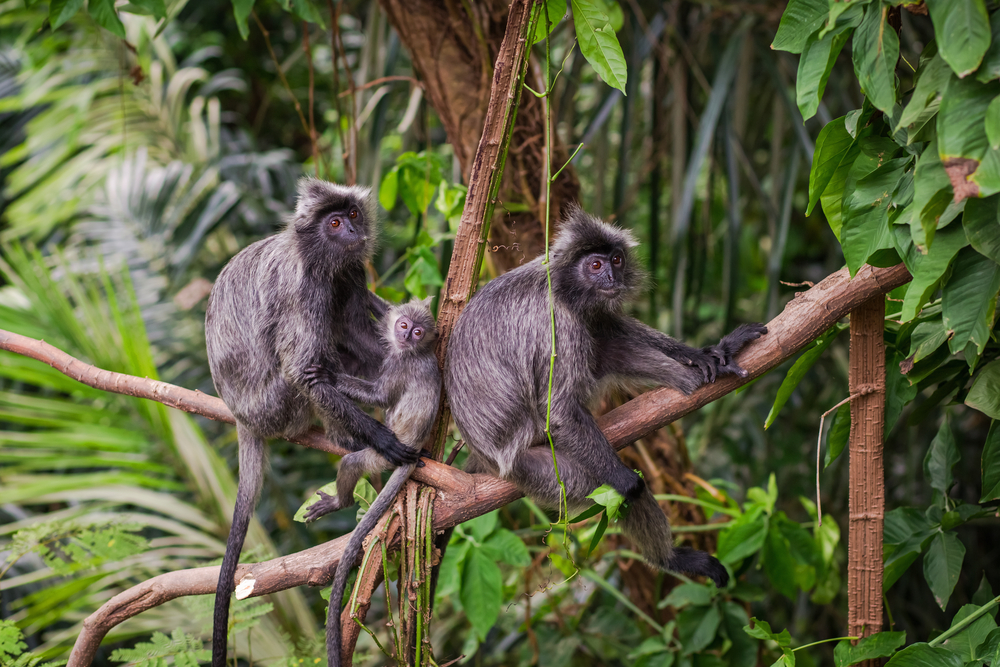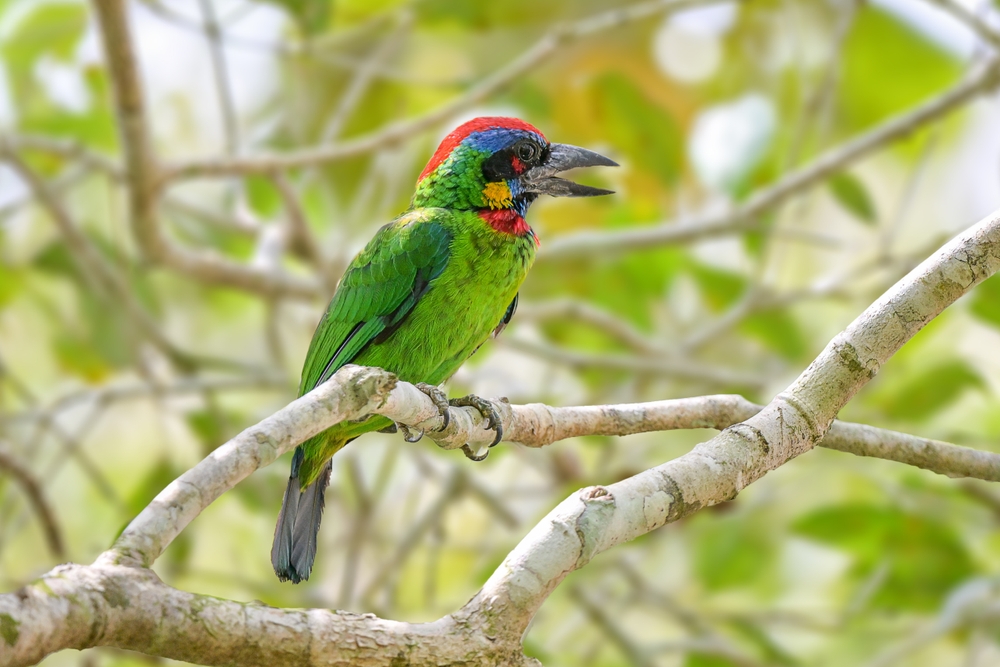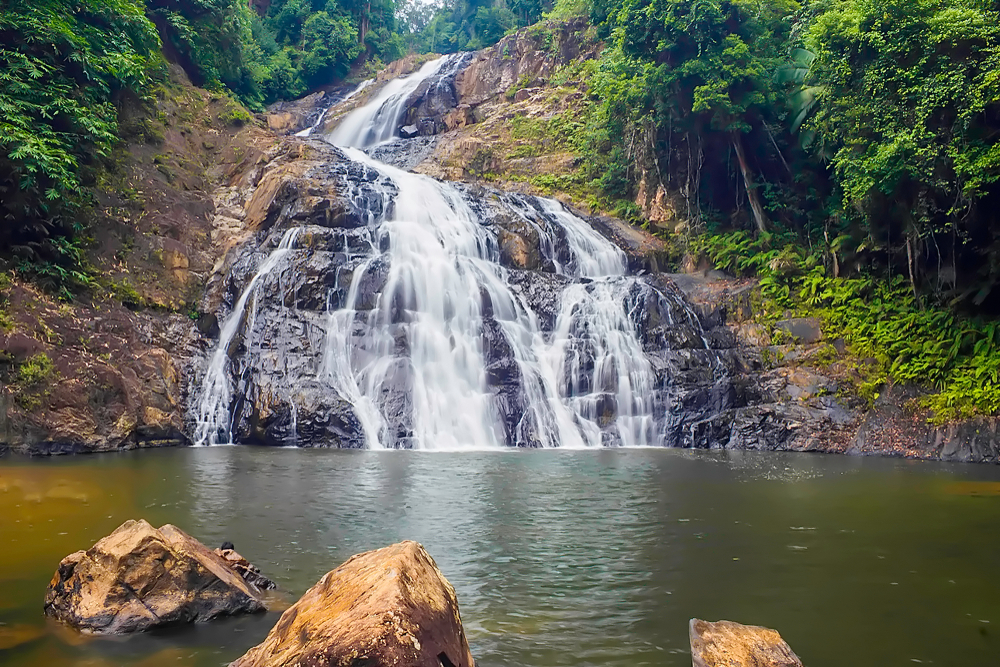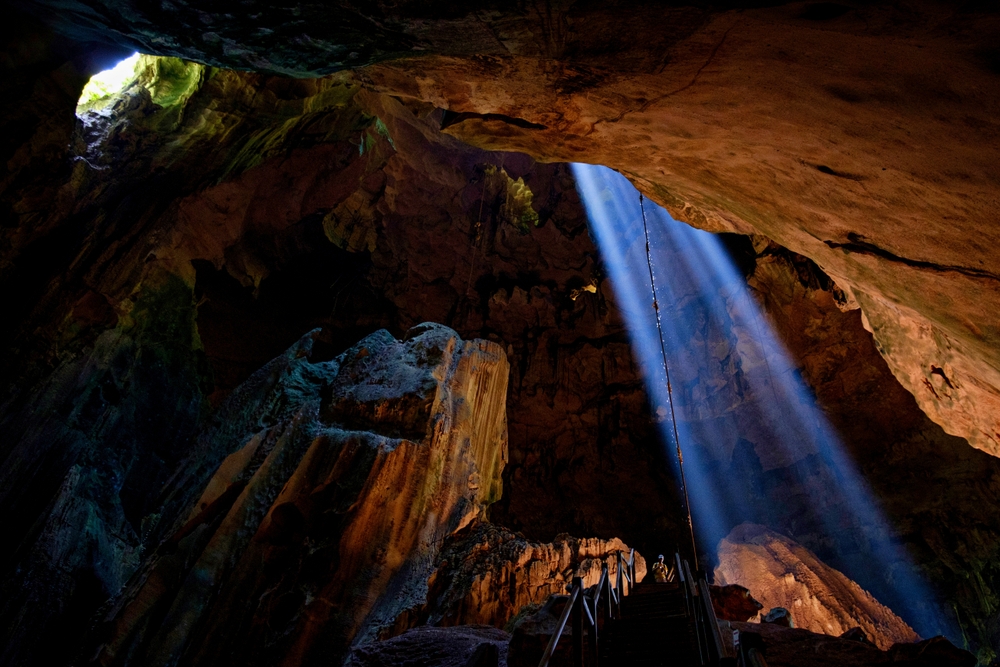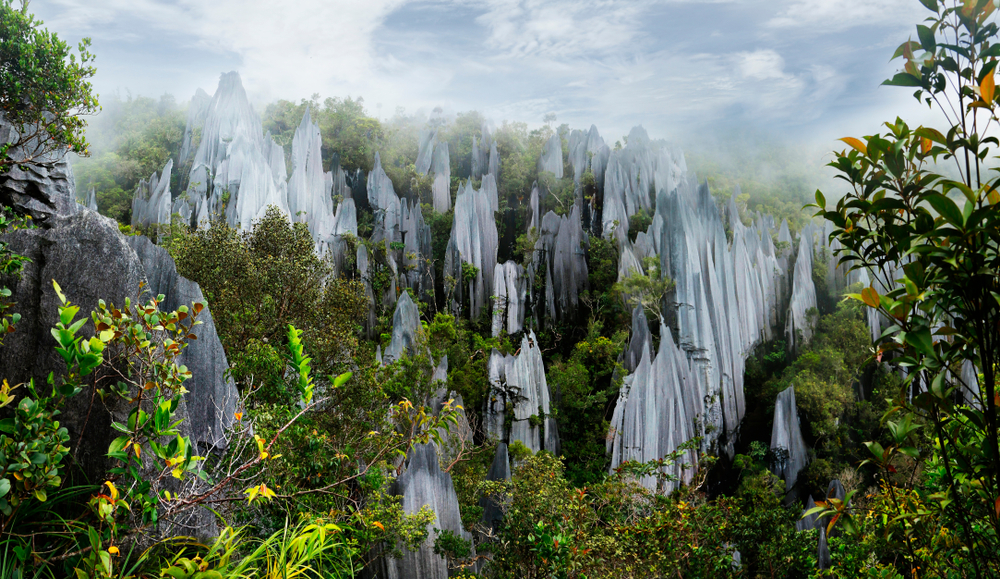Tanjung Datu Overview
Tanjung Datu National Park, located on the northwestern tip of Borneo in Malaysia’s Sarawak region, is often referred to as the “Heaven of Borneo.” Known locally as Taman Negara Tanjung Datu, the park spans an area of approximately 5.06 square miles (13.1 square kilometers).
Although it is one of the smallest national parks in Sarawak, its incredible biodiversity, pristine landscapes, and striking coastal environment make it a must-visit destination for nature enthusiasts. The park’s terrain is a picturesque blend of coastal beaches, dense rainforest, and rugged hills.
Visitors are greeted by golden sandy shores, crystal-clear waters, and lush greenery that seem to stretch endlessly. Notable geographical features include the headlands that give the park its name, Tanjung Datu, and a pristine coral reef system just offshore. The rainforest teems with tropical flora such as towering dipterocarp trees, pandanus, and mangroves along the shoreline. These plants play a crucial role in stabilizing the coast and supporting marine ecosystems.
Tanjung Datu is home to a rich array of wildlife, making it a haven for nature lovers and wildlife photographers. Visitors may encounter mammals like the endangered Bornean gibbon, long-tailed macaques, and flying squirrels. The park is also a sanctuary for marine turtles, particularly green turtles and hawksbill turtles, which nest on its beaches.
Bird enthusiasts will delight in spotting species such as the rhinoceros hornbill, crested serpent eagle, and various kingfishers. Reptiles, amphibians, and an impressive diversity of insects also thrive in this unspoiled environment.
Popular attractions in the park include its secluded beaches, where visitors can relax or participate in conservation activities like observing turtle nesting. Hiking trails wind through the rainforest, offering breathtaking views of the coastline and opportunities to spot wildlife in their natural habitats. The offshore coral reefs provide excellent snorkeling and diving experiences, revealing vibrant marine life such as clownfish, parrotfish, and anemones.
Visitors can experience Tanjung Datu in several ways. Guided jungle treks allow exploration of the forest’s hidden treasures, while the beaches offer a tranquil retreat for camping and picnicking. For those interested in marine life, snorkeling and diving are highly recommended. Boat rides from nearby villages such as Sematan are commonly used to access the park.
Despite its beauty, Tanjung Datu faces conservation challenges, particularly from illegal logging and poaching. However, significant efforts by the Sarawak Forestry Corporation and other organizations have led to successful initiatives, including turtle conservation programs and community engagement. These efforts have helped protect the park’s ecosystems and enhance local awareness of its ecological importance. With careful management, Tanjung Datu continues to be a beacon of hope for sustainable conservation and eco-tourism in the region.








































































